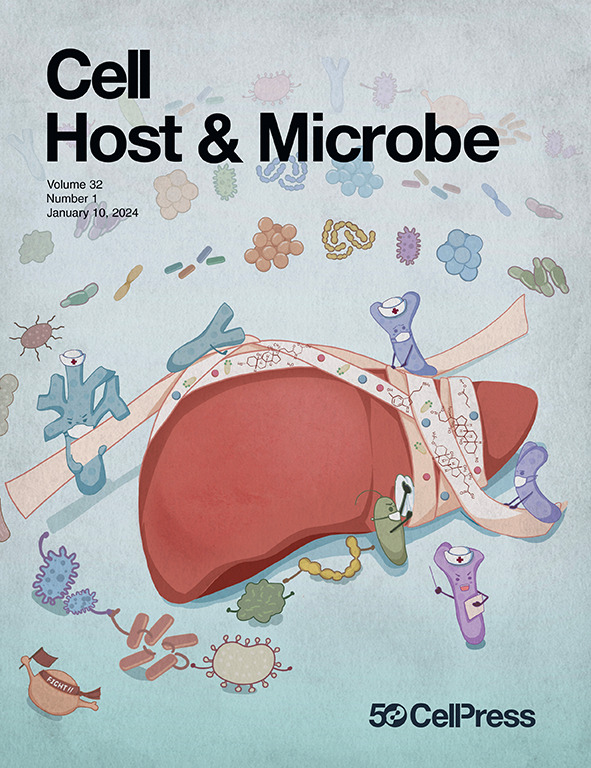Bacteriophage genomes encode both broad and specific counter-defense repertoires to overcome bacterial defense systems
IF 18.7
1区 医学
Q1 MICROBIOLOGY
引用次数: 0
Abstract
The evolutionary arms race between bacteria and bacteriophages drives rapid evolution of bacterial defense mechanisms with scattered distribution across genomes. We hypothesized that this variability in bacterial defense systems leads to equally variable counter-defense repertoires in phage genomes. Examining the variable regions in Pseudomonas model phages of the Pbunavirus genus revealed five anti-defense genes, including one inhibiting Druantia type III named DadIII-1, another targeting Thoeris type III named TadIII-1, one inhibiting Zorya type I named ZadI-1, and two related broad defense inhibitors named Bdi1 and Bdi2 targeting four defenses. A typical Pbunavirus encodes up to five known anti-defense genes, some inhibiting four unrelated defense systems with distinct nucleic-acid-targeting mechanisms. Structural homologs of broad-acting Bdi1 and Bdi2 are encoded across diverse phage taxa infecting multiple bacterial hosts. These findings show that phages face a variety of bacterial defenses, driving them to evolve both specific and general strategies to overcome these barriers.

噬菌体基因组编码广泛和特定的反防御谱以克服细菌防御系统
细菌和噬菌体之间的进化军备竞赛推动了细菌防御机制的快速进化,并在基因组中分散分布。我们假设细菌防御系统的这种可变性导致噬菌体基因组中同样可变的反防御谱。在Pbunavirus属假单胞菌模型噬菌体的可变区检测中发现了5个抗防御基因,包括一个抑制Druantia III型的DadIII-1,一个靶向Thoeris III型的TadIII-1,一个抑制Zorya I型的ZadI-1,以及两个相关的靶向四种防御的广泛防御抑制剂Bdi1和Bdi2。一种典型的普纳病毒编码多达5种已知的抗防御基因,其中一些抑制4种不相关的防御系统,它们具有不同的核酸靶向机制。广泛作用的Bdi1和Bdi2的结构同源物在感染多种细菌宿主的不同噬菌体分类群中被编码。这些发现表明,噬菌体面临各种细菌防御,促使它们进化出特定和一般的策略来克服这些障碍。
本文章由计算机程序翻译,如有差异,请以英文原文为准。
求助全文
约1分钟内获得全文
求助全文
来源期刊

Cell host & microbe
生物-微生物学
CiteScore
45.10
自引率
1.70%
发文量
201
审稿时长
4-8 weeks
期刊介绍:
Cell Host & Microbe is a scientific journal that was launched in March 2007. The journal aims to provide a platform for scientists to exchange ideas and concepts related to the study of microbes and their interaction with host organisms at a molecular, cellular, and immune level. It publishes novel findings on a wide range of microorganisms including bacteria, fungi, parasites, and viruses. The journal focuses on the interface between the microbe and its host, whether the host is a vertebrate, invertebrate, or plant, and whether the microbe is pathogenic, non-pathogenic, or commensal. The integrated study of microbes and their interactions with each other, their host, and the cellular environment they inhabit is a unifying theme of the journal. The published work in Cell Host & Microbe is expected to be of exceptional significance within its field and also of interest to researchers in other areas. In addition to primary research articles, the journal features expert analysis, commentary, and reviews on current topics of interest in the field.
 求助内容:
求助内容: 应助结果提醒方式:
应助结果提醒方式:


